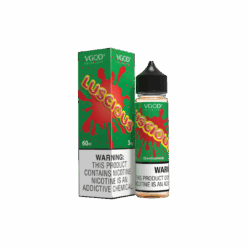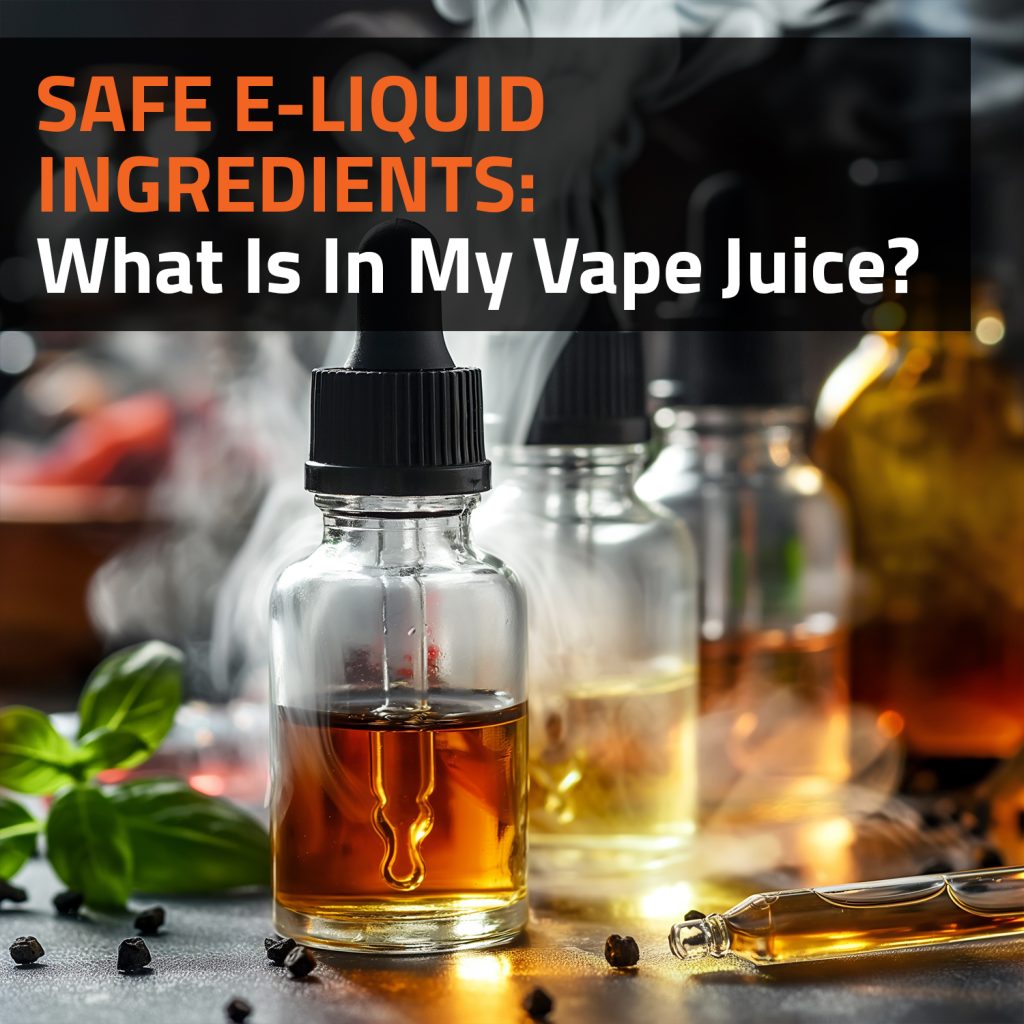As many studies have proved, there is no question that vaping is a much safer alternative to smoking. However, many people who are looking to make the switch are uncertain about the safety of the ingredients found in e-liquids. So what exactly are e-liquids made of, and are these components safe to ingest? Stick around to find out more.
Components That Make Up E-Liquids
E-liquids that you buy from reputable brands are actually very simple products, especially when compared to the chemical-filled and complex process that is involved in the production of cigarettes. E-liquids typically contain only four main ingredients, including:
- Propylene glycol (PG)
- Vegetable glycerine (VG)
- Flavourings
- Nicotine (optional)
Propylene Glycol (PG)
Propylene glycol (PG) and vegetable glycerine (VG) are two of the main ingredients that make up the majority of e-liquids. You cannot vape pure nicotine as it is incredibly strong and would be highly toxic to consume. Similarly, flavourings are much too concentrated to vape on their own. Therefore, you need an extra ingredient as a base liquid to dilute your nicotine and flavourings to their desired strengths. PG and VG do exactly that.
Propylene glycol is one of the most commonly used chemicals in the world, with more than 2.16 million metric tons of it being produced every year. It is a synthetically produced product that is also regarded as safe for oral consumption.
PG has a number of useful properties. It can attract and retain water, so it is used in many shelf-stable foods to prevent them from drying out. Since PG is an emulsifier and solvent, it is also a very good base for liquid food flavours, medications, and cosmetics. If there is PG in a product, you can use it without shaking the bottle to recombine all the ingredients first. That is why you never have to shake your e-liquid bottle before refilling your tank or pod.
PG is a much better solvent than VG is, so e-liquids that have higher PG concentrations typically have bolder and more distinct flavours. PG-dominant e-liquids are also more suitable for those who switch from smoking to vaping as they produce a stronger throat hit. When it comes to vapour production, high-PG liquids will produce small clouds that tend to dissipate quickly.
Vegetable Glycerine (VG)
Whereas PG is a synthetic product, vegetable glycerine (VG) is a naturally occurring chemical. It is another very common chemical as it is a byproduct created in the process of soap making, during which some VG can even be placed back into the soap due to its moisturising properties.
When the vaping industry was just starting, commercial e-liquid brands solely used PG as an e-liquid base. However, as certain users had allergies and others had different vaping needs, VG rose to popularity and is widely used in e-liquids today; with a PG base or as a base on its own.
VG has a naturally sweet flavour, making it a popular sweetener in sugar-free and reduced sugar products. However, this can sometimes be a negative quality when VG is considered as an e-liquid ingredient as its sweetness can muddy the actual flavour notes of your e-liquid’s full profile. If you are looking for the smoothest possible inhale though, you should definitely turn towards a high-VG blend.
Since VG is much thicker than PG, vaping with a high-VG e-liquid will produce impressively big clouds that will last long before they dissipate. Pair a high-VG liquid with a sub-ohm vape tank and you will be cloud chasing to the maximum!
Flavourings
Flavourings are the real distinctive part of any e-liquid. Most e-liquids are a combination of artificial and natural food-grade flavourings, and they are the same type you would find companies using in the snack, candy, food, and beverage industries. That is why some of your favourite e-liquid flavours can taste so similar to popular desserts, snacks, and foods.
Since these flavourings can be found in food products, they are labelled as safe for consumption.
Nicotine
Even though it is an optional component in e-liquid, nicotine is the primary active ingredient that can be found in e-liquids. There are many nicotine-free options available on the market, but since vaping has garnered popularity as a safer smoking alternative, nicotine is an important e-liquid component to look at. Luckily, vaping products come in a wide range of different nicotine strengths to cater to every vaper’s needs.
Until recently, most of the nicotine that was used in e-liquid was naturally extracted from tobacco leaves by using basic solvents, most commonly ammonia. When you use a solvent-based method to extract nicotine, it increases the pH of the solution and changes the nicotine from its original salt-state freebase nicotine. Freebase nicotine has been the most common form of nicotine used for e-liquids since the beginning, but Nicotine salt e-liquids have grown very popular in recent years.
Nicotine salt e-liquids, or Nic salts, were created due to the fact that vapers who were making the switch from smoking to vaping required e-liquids with higher nicotine strengths to satisfy their cravings and give them the right throat hit. They work best with smaller devices and need to be puffed using the mouth-to-lung method (MTL), which is the closest to smoking a traditional cigarette. Freebase nicotine is slightly alkaline, which can irritate the throat with a higher nicotine content. Since Nic salts are mildly acidic, they cause nicotine to revert to its natural salt-state, reducing its alkalinity and giving it a smoother inhale.
E-Liquid Ingredients To Avoid
While e-liquids purchased from reputable brands that only contain the ingredients discussed above are regarded as safe for consumption, you should avoid e-liquids with other components. Some common ingredients used in e-liquids that you should look out for include Diketones, such as diacetyl, acetoin, and acetyl propionyl. It is believed that these components led to the famous vaping myth of “popcorn lungs”.
Although results on studying the effects of vaping these components are still inconclusive, it is best to stick to the basics and only purchase from reputable brands that use a mix VG and or PG, flavourings, water, and potentially nicotine.
When it comes to vaping safety, you should always check the ingredients of your e-liquids. As long as you purchase your vaping products from reputable brands, there should be no need to worry. As long as you do not see any other strange names next to vegetable glycerine (VG), propylene glycol (PG), flavourings, water, or nicotine, you can vape away.
-
VGOD – Luscious
R320.00







